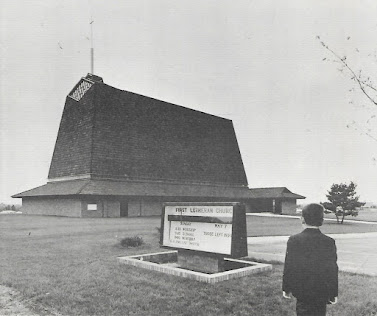Built on a Rock
By Bishop Brian Maas
September marks the 150th anniversary of the formal founding of an entity known as the Nebraska Synod. The committee working to help commemorate that milestone has chosen as its theme, “Built on a Rock,” having in mind especially Jesus himself as the chief cornerstone upon whom, with the foundation of the apostles and prophets, Christ’s church is built.
Had the Nebraska Synod been built on anything but this solid rock, this chief cornerstone, I’m convinced it wouldn’t still be around. Only Jesus Christ, through the constant presence of his Spirit, speaking through the Word, becoming flesh again both through the sacrament and through the living members of his body the church, could support and sustain this powerful, dynamic, faithful and committed entity.
Certainly those descriptors didn’t all fit the fledgling body at its outset. The first gathering of the Nebraska Synod—its first assembly, if you will—was comprised of a small handful of people, from tiny congregations of people scattered around the endless prairie of a state still in its infancy. It would have been a bold gambler who’d have bet on that inauspicious gathering becoming the body that is today the Nebraska Synod.
Yet that small handful of individuals knew they weren’t building on their own achievements, however significant they might become, nor upon the clarity or cleverness of their constitutional language, nor on the offerings they might gather or the buildings they might construct.
They knew, sometimes as a result of hard experience, that physical structures, however important they might be, are not the church. They knew that if they were building for the future, if they were to be construction partners with Christ, they had to be building human communities with Christ alone as their foundation. Everything else is too fleeting, too impermanent, too secondary to the work of discipleship, of constructing communities.
Stories abound in the history of this synod of congregations’ buildings that were destroyed by storm, blew away in tornadoes, burned to the ground, or even in one instance—that of a sod structure—literally dissolved in the rain. It was never its buildings that were the core structure of the Nebraska Synod; it was always its people, the human community known as the Body of Christ, that would be its strength, its lifeblood, its heritage. And it could be all of that only to the degree it was built and continued to stand firmly upon its Chief Cornerstone.
One hundred fifty years later, in spite of disasters both natural and human, we are the descendants and heirs of those visionary risk-takers, foundation-layers and faith-builders. They have left for us a history and a heritage—and they trust us to do the same for those who follow.
Which leads me to ponder: what are those actions we’re taking, those entities we’re building, that are similarly set confidently upon Jesus Christ as their cornerstone? What are the risks we’re taking, the words we’re speaking, that proclaim such confidence in the presence and partnership of Christ? What is the legacy we’re leaving that will lead others in some distant future to proclaim, “they too built on the Rock”?




Comments
Post a Comment